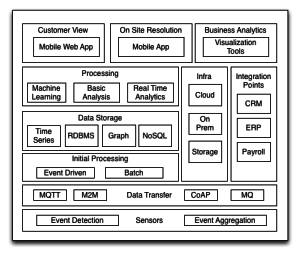Today is my first day at RedMonk, and to say I’m thrilled to be coming onboard (well now that I have completed the longest internal RedMonk meeting I will ever have) is a bit of an understatement.
Following in the footsteps of Coté and Donnie is always going to be a challenge. But thankfully filling shoes is not a job requirement. Thoughtful, pragmatic, objective and rational analysis of the industry, and the people that make up the industry, is.
Questions and Communities
So what about me? Well as Stephen and James have both mentioned I like to ask interesting questions, be it of people, of process, of data and of the systems we accept as the given.
However as much I also like to ask questions, I love to learn from the answers and try to join the dots. Asking a question and learning from a community is far more powerful than asking a question of a single individual. One thing I can be certain of in joining RedMonk, is that I will be in the privileged position to ask questions of lots of communities.
Stacks and Developers
When thinking about this post I thought of a fictional company, Big Power Corp. Big Power Corp manages a power grid and has a number of competitors. Big Power Corp wants to develop a solution that monitors their power grid for potential problems and outages, notifies customers, dispatches operatives and so forth.
So what is the business need? That is pretty straight forward – ensuring their customers continue to get electricity. This neatly splits itself into two parts, phrased in consultant speak as
- Preempt any problems across our grid
- Proactively react to any outages and resolve them as quickly as possible
Now, when we move on from solution by PowerPoint (or the visionary leadership work), we need to ask what does our hypothetical stack look like for meeting this business need. A take on this might be..
Now ask yourself what is the common thread across this entire puzzle?
Developers. No single part of this puzzle can be solved without developers being involved. It might be developers working on protocols and standards. Perhaps it is developers in a single vendor creating a complete solution, or, in what is now a far more likely scenario, developers in multiple companies and communities creating software that integrates together and ultimately solves the problem.
It is not just developers – in a company like Big Power Corp the solution will involve the operations teams, product managers, project managers, business analysts, executive sponsors and more. But if Big Power Corp has no access to developers, well they are never going to implement the hypothetical solution above. If you are the CEO of Big Power Corp, you can rest assured that one thing will occur – one of your competitors will develop this solution.
This, to me, is the beauty of what we do at RedMonk. We get to look at the entire picture. From that initial event on a sensor, all the way through to a customer getting information on their mobile device. We get to think about how developers like you look at this problem, what helps and hinders you, what motivates you, what tools, software and approaches you use to get your job done.
People, Stacks and People
What is far, far more important though is that we get to spend time with some of the most talented technologists on the planet. Technologists, as people, people who are participants in many, deeply intertwined, communities. Not resources. Very clever people, who love solving difficult problems. Stacks develop and evolve, fall in and out of favor. People are a constant.
If you have ever been to a RedMonk event, you will know just how much time and effort the team put into creating an experience that is all about bringing communities and developers together, and showing an appreciation of the craft of software development and operations.
I have the privilege of attending my first Monktoberfest in a few weeks time. Not only do I get to attend, I get to attend as one of the monks. Come along, we have a lot of questions to ask, conversations to have and communities to connect.

No Comments